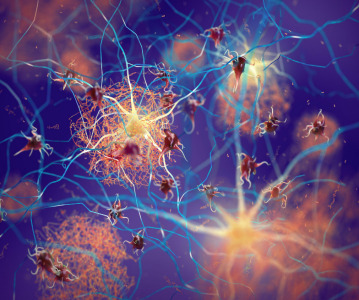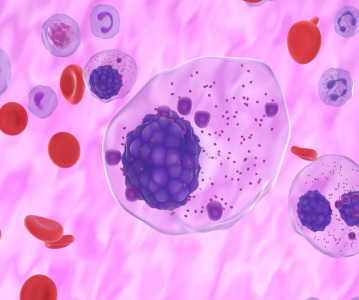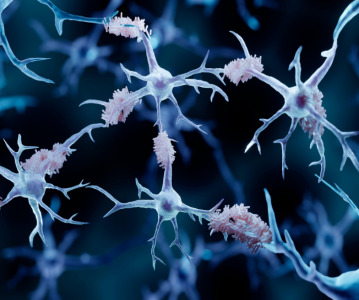Seeking Single Cells’ Secrets

The National Institutes of Health has awarded grants totaling $7.9 million in 2014 to 25 research teams who are unraveling the workings of single cells, as part of an effort to spur development of personalized treatments that target disease at the cellular level. The grants are supported by the NIH Common Fund’s Single Cell Analysis Program (SCAP).
“Cells are the most basic form of life; they make up every tissue and organ system in our bodies,” said James Anderson, director of NIH’s Division of Program Coordination, Planning, and Strategic Initiatives (DPCPSI). “Most cells are healthy, but this can change. They can become cancerous, get infected by viruses, undergo cycles and ageing. With these awards, we are making an investment that holds promise for widespread advances across medicine.”
This year’s SCAP grants fund applications submitted in response to requests for applications issued last December.
One group of projects is validating and refining already established technologies for studying the biological properties of single cells:
• Modeling how tissue properties of cells emerge during development
• Detecting genetic changes in live animals
• Manipulating cells with submicron precision
• Tracking fat metabolism using millisecond technology
• Detecting the tiniest genetic variation
• Discovering how cells renew themselves and differentiate as they develop
• Profiling gene expression in a cell’s nucleus to identify early protein signatures
• Optimizing “disease-in-a-dish” analysis
One group of grants is pioneering exceptionally innovative new technologies:
• A genetic imaging tool to label vast numbers of cell lineages
• Microsecond spectroscopy to repetitively assess a single cell in a living organism
• A high definition cell “printer” based on precise fluid mechanics, robotics and microscopy
• Optically guided technology to identify cell types that give rise to different tissues
• Light-induced cellular gene changes in a live vertebrate animal
• Gene expression sensors that report out changes among cells in living tissue
• Real-time, micro-level scans tracking a transplanted cell in a live mouse
• Spectrometry so sensitive that even subcellular components can be chemically analyzed
And one group of grants adds a single cell component to already active projects:
• How a key immune cell can be either an acute defender or a memory cell
• How a mouth bacterium can cause minor irritation or aggressive periodontal disease
• Tracking environmentally triggered changes in a gene in a formative human cell
• Characterizing how micro-level gene expression changes in a cancer cell suppress tumors
• How a gene regulator exerts effects on different classes of target genes
• Genetic mechanisms by which intestinal lining cells are regenerated
• Targeted genetic alteration of a key cellular process by which genes are switched off
• Characterizing the workings of immune cells that target leukemia
• Genetics of a disease-in-a-dish disease model derived from a type of heart cell.
For a detailed description of all funded SCAP grants, click here.
Related News
-
News BioNTech to begin mRNA vaccine manufacturing in Rwanda by 2025
German biotechnology company BioNTech has stated their intentions to begin production at their mRNA vaccine factory in Rwanda by 2025, which will mark the first foreign mRNA vaccine manufacturing site on the continent of Africa. -
News Identifying Alzheimer’s Disease biomarker proteins with whole blood tests
A University of Manchester spin-out pharmaceutical company, PharmaKure, has reported successful study results for the quantification of Alzheimer’s Disease biomarker proteins with a whole blood test. -
News Bill & Melinda Gates Foundation to boost mRNA vaccine initiatives in Africa with USD $40m
To address vaccine inequality and accessibility issues, the Bill & Melinda Gates Foundation aims to deliver USD $40m to various biotech companies and vaccine manufacturers in support of mRNA vaccine development. -
News CPHI Podcast Series: Exploring neurological frontiers in Alzheimer's and beyond
The next episode of the CPHI Podcast Series delves into the science and background behind some recent developments in the field of Alzheimer's disease and neurological disorders. -
News Is patient centricity the future of pharmaceutical manufacturing?
In this interview with Sandra Sánchez y Oldenhage, President of PharmAdvice, she speaks to the importance of considering patients in the manufacturing stages of the pharmaceutical supply chain, and how it can redefine healthcare. -
News CPHI Podcast Series: How to leverage AI for Drug Discovery
Artificial intelligence is the topic of debate in the latest episode from the CPHI Podcast Series, where Digital Editor Lucy Chard speaks with Bill Whitford of DPS Group about the integration of AI in healthcare. -
News Pfizer forges ahead with blood cancer therapy after approval from FDA
Pfizer gains accelerated approval from the US FDA for their new bispecific antibody therapy for multiple myeloma, set to address an unmet need for patients. -
News Alzheimer's drug donanemab deemed effective in landmark clinical trial
Results from the TRAILBLAZER-ALZ 2 Randomised Clinical Trial into the use of donanemab to treat early symptoms of Alzheimer’s disease have been analysed.
Position your company at the heart of the global Pharma industry with a CPHI Online membership
-
Your products and solutions visible to thousands of visitors within the largest Pharma marketplace
-
Generate high-quality, engaged leads for your business, all year round
-
Promote your business as the industry’s thought-leader by hosting your reports, brochures and videos within your profile
-
Your company’s profile boosted at all participating CPHI events
-
An easy-to-use platform with a detailed dashboard showing your leads and performance







